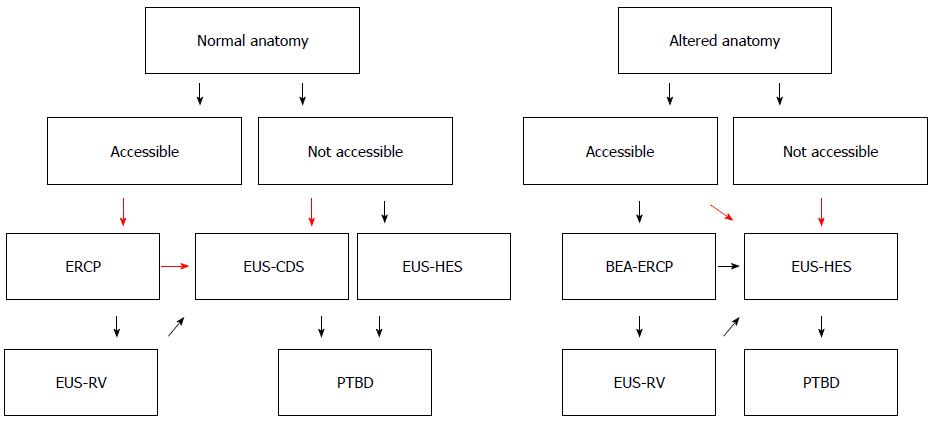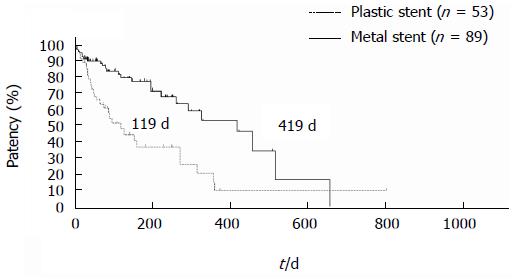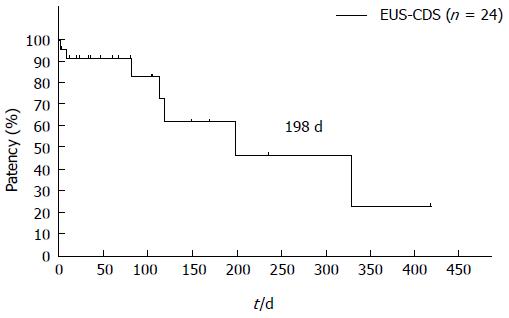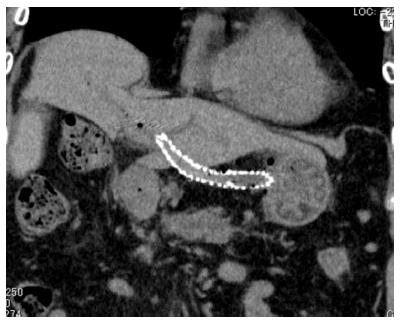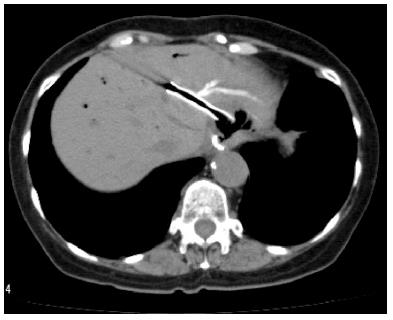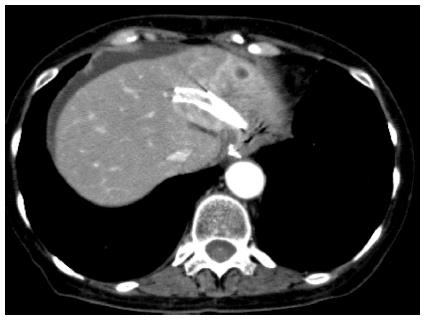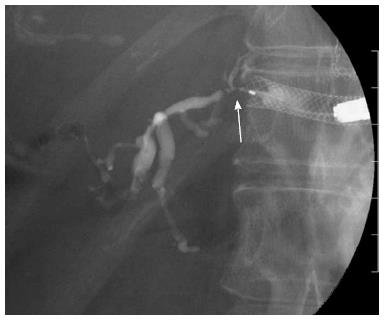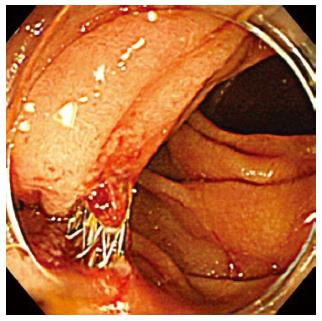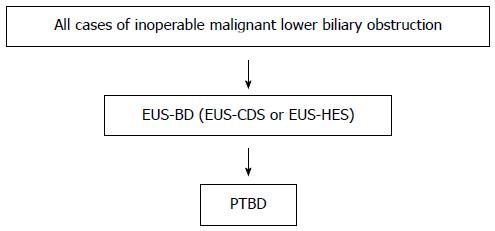Copyright
©The Author(s) 2016.
World J Gastroenterol. Jan 21, 2016; 22(3): 1297-1303
Published online Jan 21, 2016. doi: 10.3748/wjg.v22.i3.1297
Published online Jan 21, 2016. doi: 10.3748/wjg.v22.i3.1297
Figure 1 Endoscopic ultrasonography-guided biliary drainage algorithm for inoperable malignant lower biliary obstruction.
Flow chart for management of inoperable malignant lower biliary obstruction. This algorithm is proposed for use by experts in endoscopic ultrasonography-guided biliary drainage. Our recommendations are large red arrows.
Figure 2 Stent patency in endoscopic ultrasonography-guided choledochoduodenostomy patients.
Median stent patency in endoscopic ultrasonography-guided choledochoduodenostomy patients patients was 119 days for plastic stents and 419 d for metal stents. Logrank: HR = 0.3888, 95%CI: 0.19453-0.61081, P < 0.001.
Figure 3 Patency of endoscopic ultrasonography-guided choledochoduodenostomy after double stenting.
After double stenting, median choledochoduodenostomy patency was 198 d. EUS-CDS: Endoscopic ultrasonography-guided choledochoduodenostomy.
Figure 4 Stent migration into abdominal cavity.
There is wide space between the liver and stomach in some cases.
Figure 5 Focal cholangitis due to endoscopic ultrasonography-guided hepaticogastrostomy.
Two days after endoscopic ultrasonography-guided hepaticogastrostomy, focal cholangitis occurred after blockage of the peripheral bile duct by the metal stent.
Figure 6 Liver abscess due to endoscopic ultrasonography-guided hepaticogastrostomy.
Liver abscess occurred after blockage of the peripheral bile duct by the metal stent.
Figure 7 Bile duct stenosis caused by hyperplasia.
Hyperplasia caused by placement of a metal stent that was too large for the peripheral bile duct.
Figure 8 Double penetration of the duodenum.
Double penetration of the duodenum is a unique complication of endoscopic ultrasonography-guided choledochoduodenostomy that is performed using the oblique view.
Figure 9 Endoscopic ultrasonography-guided biliary drainage algorithm for management of inoperable malignant lower biliary obstruction suggested for the near future.
Endoscopic ultrasonography-guided biliary drainage will be first-line biliary drainage method instead of endoscopic retrograde cholangiopancreatography, in our opinion. Percutaneous transhepatic biliary drainage will persist as the last-resort procedure. EUS-BD: Endoscopic ultrasonography-guided biliary drainage; EUS-CDS: Endoscopic ultrasonography-guided choledochoduodenostomy; EUS-HES: Endoscopic ultrasonography-guided hepaticogastrostomy; PTBD: Percutaneous transhepatic biliary drainage.
- Citation: Hara K, Yamao K, Mizuno N, Hijioka S, Imaoka H, Tajika M, Tanaka T, Ishihara M, Okuno N, Hieda N, Yoshida T, Niwa Y. Endoscopic ultrasonography-guided biliary drainage: Who, when, which, and how? World J Gastroenterol 2016; 22(3): 1297-1303
- URL: https://www.wjgnet.com/1007-9327/full/v22/i3/1297.htm
- DOI: https://dx.doi.org/10.3748/wjg.v22.i3.1297









